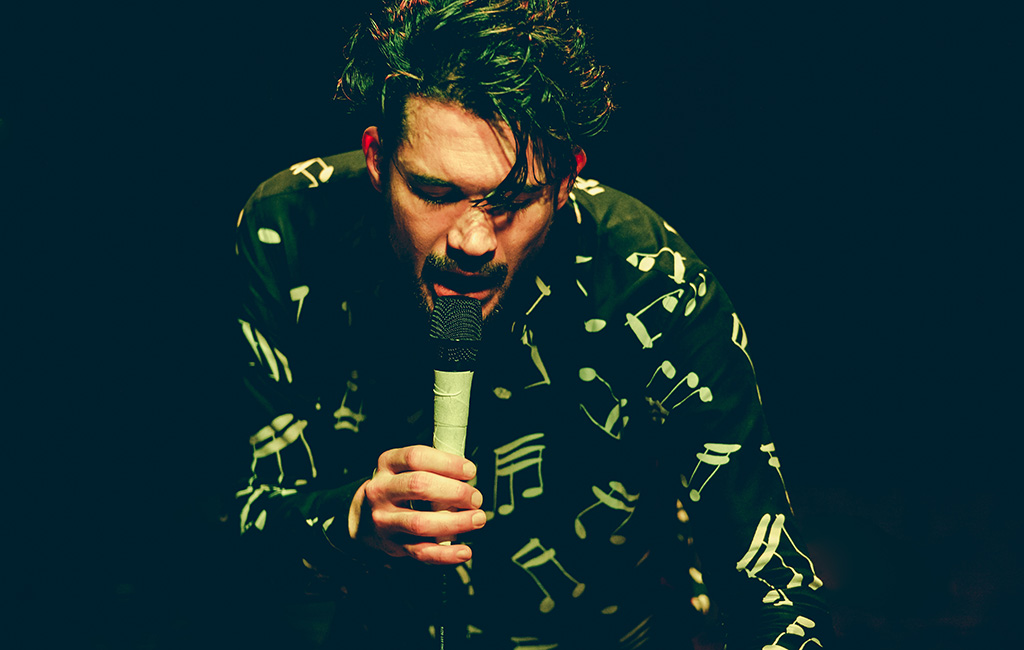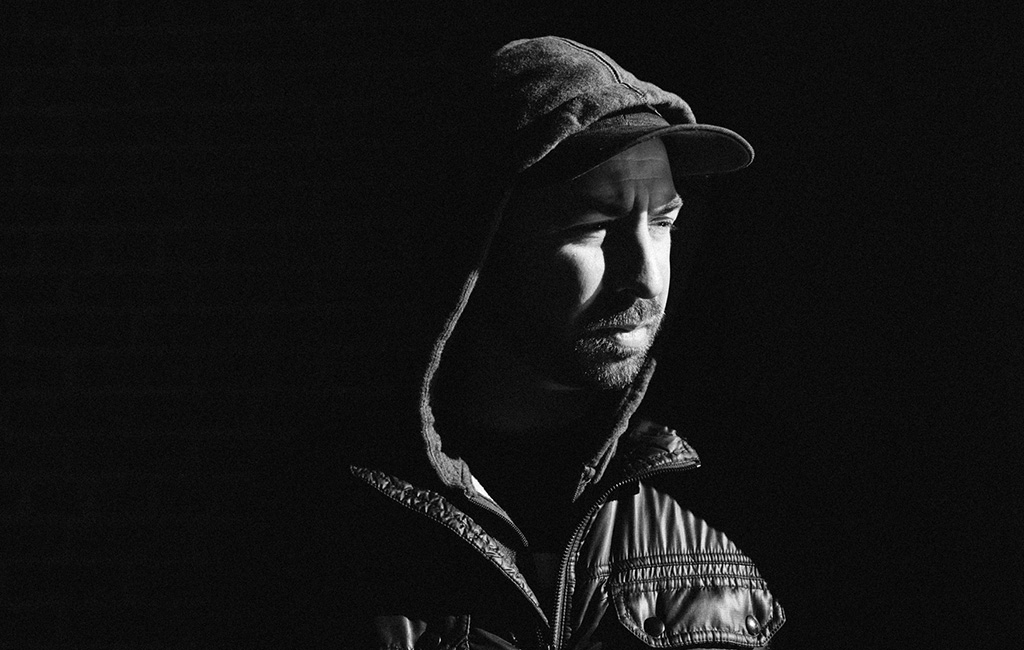How the independent label that brought you Matthew Dear and HTRK got its start.
In this ongoing series, we take a closer look inside some of the many labels carving their own niche.
In the past 20 years, electronic music—particularly American electronic music—has seen its share of ups and downs. Styles, subgenres, even entire scenes have come and gone, and come back all over again. A robust vinyl market gave way to digital downloads, while streaming brought club music into listeners’ homes on a scale unimaginable in the CD era. Ann Arbor, Michigan’s Ghostly International label has weathered it all—not just endured, but positively thrived, growing from a humble, underground outfit peddling white-label 12-inches into a respected imprint with a catalog several hundred releases deep. Its roster comprises some of the most respected artists working today, from longtime staples Matthew Dear and Dabrye to more recent signees like Telefon Tel Aviv and Mary Lattimore.
What might be most remarkable is the way that Ghostly has thrived even as the nature of record labels has shifted. Once upon a time, labels made their names as tastemakers, and Ghostly’s taste has been second to none—both mapping the limits of contemporary electronic music and anticipating key shifts in listening habits. But, says founder Sam Valenti IV, his label’s role has fundamentally changed over the past two decades.
“Today, when artists have the ability to self-distribute, to self-release—which is fantastic, a huge boon—a label is important because it’s a team. It’s a group of people that is trying to make the signal-to-noise ratio better for you to get your music, your art, understood as best as possible," Valenti says. "I think of it more as a service business. I don’t want to turn Ghostly into a white-label company that takes on whatever project, puts it out, and moves on to the next. But I want to build a team around art to help make it work and last, and also make it financially ethical for the artist. A good label is an engine that helps propagate interesting art into interesting places.”
Valenti explain explained to us how Ghostly has become what it is today.
The beginnings
Valenti grew up 30 miles outside Detroit, where, in the 1990s, the city’s thriving dance-music culture reached even suburban high-school kids like himself, thanks to adventurous radio DJs like the Electrifying Mojo. “I realized that a lot of the electronic music I was falling in love with came from the area,” Valenti recalls. “You’d go into the record store in Detroit and you’d see the racks of labels like Planet E and Transmat, and they all had local addresses. There was this idea that you can make something tangible that gets on the radio and into the clubs. It felt very democratic.” The other appealing thing was what Valenti calls the “world-building” aspect of this otherwise homespun, DIY output. “These labels had a mythology and an aesthetic, like Underground Resistance," he says. "I liked that you could communicate a lot through a 12-inch record.”
In high school, Valenti had DJed at school dances and interned with a few local labels, unsure how to break into the music business. Then, his first week of college in 1998, he met Matthew Dear, who was playing a live set at a student party, and they began hatching plans. Through Ann Arbor local Todd Osborn, another future signee, he met Tadd Mullinix, who gave Valenti a demo tape containing songs that Mullinix would eventually release under his real name as well as the aliases James T. Cotton, Charles Manier, and Dabrye, one of the label’s first big successes. Running the gamut from lo-fi techno to glitchy instrumental hip-hop, Mullinix’s range was one of the deciding factors in launching Spectral Sound, Ghostly’s club-focused sub-label.
“I knew that Ghostly was going to have to be free-rein and free-range to keep up with an artist like Tadd,” says Valenti. “The Ghostly/Spectral split is like a yin-yang of mind/body, experimental/functional: Spectral as a DJ-centric label, and Ghostly as an open-ended conversation. It felt like those things had to happen for it to work.”

The growing pains
By 2002, with a handful of singles under their belt, along with albums from Mullinix and Dabrye, Ghostly started making bigger moves. One was Tangent 2002: Disco Nouveau, a groundbreaking compilation of analog-flavored electro. It was a curveball compared to the label’s previous output, but it didn’t hurt that it happened to coincide with the burgeoning electroclash scene and a widespread hunger for retro dance music. It also proved Ghostly’s ability to look at the bigger picture. After all, says Valenti, “Part of the desire to make a label is to make a statement, right?”
That same year, Spectral released the State of the Union EP, a compilation whose title underscored Ghostly’s curatorial intentions. Valenti felt that American electronic dance music was too often getting overlooked. “A lot of American producers were making really important music that borrowed from the European tradition, but was also very resolutely American, in the best sense of that word.”
By the middle of the decade, they had driven that point home with the success of “Mouth To Mouth,” a peak-time anthem by Matthew Dear recording under his Audion alias. The track was ubiquitous in clubs across Europe—it still sets dance floors alight around the world more than a decade later—and confirmed that the crew had put a new-school twist on classic Midwestern techno.
Still, if the goal was “being nimble enough not to calcify and get pigeonholed,” as Valenti puts it, not all Ghostly’s moves were greeted with equal acclaim. Around the same period, Ghostly pushed a sizeable chunk of chips on a radically different kind of sound: Indie-leaning electronic pop acts, often with vocals, like Mobius Band. “There were a lot of people who were not psyched about that,” recalls Valenti. “I remember our distributor being, like, ‘What are you guys doing?’ Maybe we could have couched those ideas better, or baked them in slower, but as a label, you’ve got to continue to push against expectation. Otherwise, you’re probably failing to some degree.”
These days, that kind of variety is one of Ghostly’s greatest assets. It’s telling that one of their biggest artists, Matthew Dear, has two parallel careers: recording steely, club-shaking techno as Audion, and also idiosyncratic singer-songwriter music under his own name.
The expansion
Founded in 1998, when many young people were first getting online, Ghostly in many ways has grown in tandem with the digital music industry, which might help explain how they've managed to weather so many shifts—in musical styles, distribution platforms, and even cultural values—so skillfully.
“It’s not just the medium, or the waveform becoming the object,” Valenti says. “It’s how music is propagated, how image is propagated, social media, file sharing. We’ve tried our best to navigate all these turns with intentionality. My biggest concern at the beginning was getting distribution in stores. That’s obviously changed a lot. So okay, how do we communicate with people without tangible product? It forces you to think about what you actually care about, what’s the end goal, and I think the North Star is always: Do what’s best for the artists.”
What form that takes depends on the artist in question; Valenti’s A&R approach is unusually hands-off, when it comes to determining the final shape of a record. “We have always been freedom-centric,” he says. “I’ve never sent an artist back to the drawing board to make something different. I can be like, ‘Hey, I think this is the best song,’ or ‘ I think this should be longer.’ But we don’t engineer our artists; we try to make things happen for them. We try to serve their ambition.”
Ghostly’s artists come from all over—there are those, like Dear, who have been with the label since day one, and rarely if ever recorded for anyone else. Then there are acts like the dark synth-pop act HTRK, who bounced from label to label before finally landing on Ghostly; they recently released their second album for the label.
“I’ve never been great at cold-solicited demos,” admits Valenti. “I envy and admire labels that can just open the mailbag. Only a handful of our music has come that way. Usually it comes through other artists—like Shigeto will say, ‘Hey, check out Ali Berger.’ If one of our artists is willing to share the table, that’s a good sign, because there’s self-interest there too. You know, they don’t want to be on a wack label!”

The future
Today, Ghostly enjoys a rare position in electronic music, a notoriously fractious world: It boasts the underground credibility that accompanies a roster full of uncompromising DJs and producers, yet it has also earned affection from a wide swath of the listening public that has little interest in clubbing. (It certainly helps that Ghostly’s long-standing emphasis on ambient and downtempo has coincided with the evolution of chill as one of streaming music’s most popular categories.)
“In a lot of ways, we’re kind of in between,” admits Valenti. “I’m not quite Generation X and not quite a Millennial. I’ve always felt, emotionally and taste-wise, we’re not a neat story. I like the fact that Ghostly is a little bit hard to pin down, though it probably isn’t the best business strategy. But it’s a freedom move. So we have a new Galcher Lustwerk album coming out this fall—it’s very jazz, very downtempo. And then we have a compilation with Emily A. Sprague and Sarah Davachi, who are really interesting composers. And we can also do more face-forward vocal music. That’s all down to the trust the audience puts in us.”
Ghostly’s presence on Spotify is well suited to the label’s identity: unique, unpredictable, and engagingly low-key. “We try to use the platform to its best ability,” says Valenti. “We’ve been adding Canvas videos—Telefon Tel Aviv and HTRK have great new videos. I like the idea of the music becoming more visual, so any opportunity to expand that aspect is exciting to us.” And Ghostly is particularly active on the playlisting front, curating playlists that range from its 20th-anniversary celebrations to Ghostly: At Work, a roundup of the label’s in-office listening, and Ghostly: At Rest, which is focused on deeper listening. “Playlists are a great way to share—they remind me of the early days of file-sharing, as a kind of peek into somebody’s taste,” Valenti says. In fact, much of the music on Ghostly’s playlists comes from other labels. “I try to look at streaming like a fan, as opposed to just a sales vessel,” he admits. “Ghostly is less like a push company and more of a pull. I don’t like the idea of a hard sell.”
—Philip Sherburne

No comments:
Post a Comment